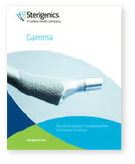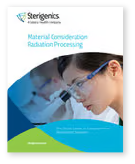Contact the Sterigenics Laval Facility
To Get Your Project Started
Thank you for your interest in our gamma sterilization services. A Team Member will be happy to assist you! Please contact our Team using the information below.
For job inquiries go to Careers
Sterigenics Laval
Facility Address
535 Boulevard Cartier Ouest, Laval, QC, Canada
Facility Service Capabilities
Routine Gamma Irradiation; GammaStat® Rapid Processing;
Process Validation, Static Irradiation, UC-15A-B (Small Sample
Testing and High Dose Irradiation)
Email Address
mireille.lahoud@nordion.com
Phone Number
1 (450) 687-5165
Key Benefits of Gamma Irradiation
Gamma sterilization technology is very well understood, safe, and easy
to validate. It is an effective sterilization method due to its:
Sterility Assurance &
Treatment Efficacy
Consistently meets product and regulatory requirements.
Safety
Consistently meets product and regulatory requirements.
Flexibility &
Versatility
Effectively sterilizes a wide range of products with different variations in dose requirements, densities, and packaging/box sizes.
Reliability
Provides unparalleled reliability and simplicity.
How Gamma
Irradiation Works
A form of electromagnetic energy characterized by its deep penetration and low-dose rates, Gamma irradiators are powered by Cobalt-60, effectively killing microorganisms throughout the product and its packaging with a very little temperature effect and no residues.
The amount of radiation received depends on the type of product and its dose requirements. The dosimetric release allows for the processing, verification, and immediate release of products for shipment.


Gamma Irradiation is
Best Suited For
- Single-use medical products
- Packaged products
- Food products
- Cosmetics
- Tissue-based devices
- Implantable medical devices (stents, heart valves, orthopedics)
- Pharmaceutical product and packaging
- Combination medical devices that may contain a pharmaceutical or biologic
- Raw materials
Careers
We are driven by our mission, Safeguarding Global Health®. Along with all of our best-in-class businesses – Sterigenics®, Nordion® and Nelson Labs® – we are a leading global provider of mission-critical end-to-end sterilization solutions and lab testing and advisory services for the healthcare industry.
If you are motivated by our mission, explore career opportunities at our businesses:






